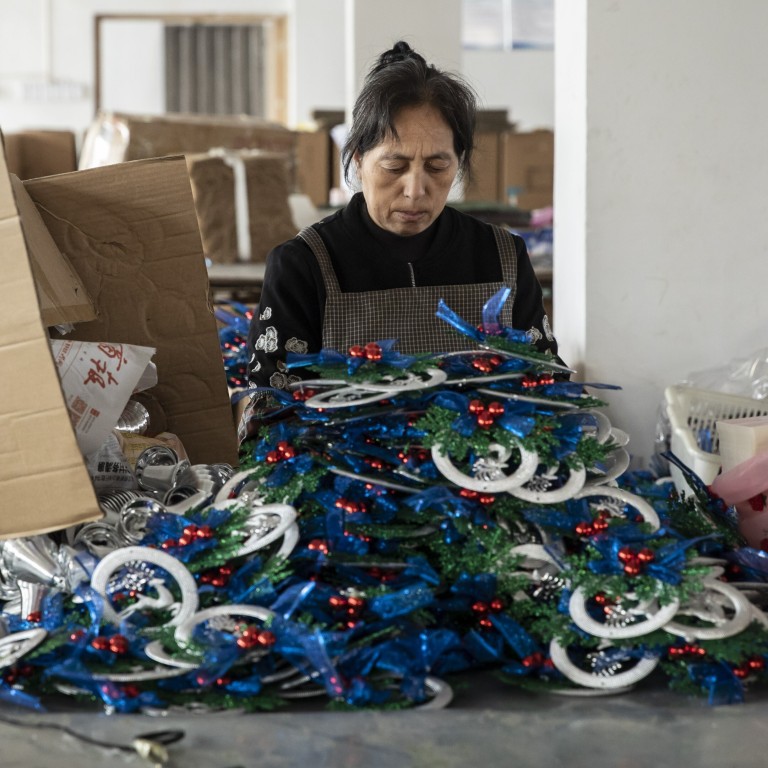
China consumer inflation up amid food supply concerns as factory-gate prices surge again
- China’s official consumer price index (CPI) rose by 1.5 per cent in October from a year earlier, up from 0.7 per cent in September
- China’s producer price index (PPI) rose by 13.5 per cent in October from 10.7 per cent in September
China’s consumer prices rose only slightly last month amid public concerns over food shortages, but factory-gate inflation surged to the highest level in 26 years, data released on Wednesday showed.
China’s official consumer price index (CPI) rose by 1.5 per cent in October from a year earlier, up from a rise of 0.7 per cent in September, the National Bureau of Statistics (NBS) said.
“In October, CPI rose under the combined influence of inclement weather, a contradiction between supply and demand of some commodities, and rising costs,” said senior NBS statistician Dong Lijuan.
China’s core consumer inflation rate, excluding volatile food and energy prices, rose by 1.3 per cent in October compared with a year earlier, up from a rise of 1.2 per cent in September.
Food prices fell by 2.4 per cent from a year earlier in October, up from a fall of 5.2 per cent in September. The increase was driven by a 15.9 per cent rise in the price of fresh vegetables in October from a year earlier, up from a fall of 2.5 per cent in September.
The price of pork – a staple meat on Chinese plates – fell by 44 per cent compared with a year earlier in October.
Non-food prices rose by 2.4 per cent in October, year on year, up from a reading of 2 per cent in September.
This was above expectations of analysts in a Bloomberg survey, who had predicted a rise to 12.3 per cent.
“In October, due to the imported international factors and tight domestic supply of major energy and raw materials, the increase in PPI expanded,” Dong added.
October’s increase was largely driven by a 103.7 per cent year on year rise in the coal-mining sector, up from a rise of 74.9 per cent in September.
Rising commodity prices have been blamed for the sharp rise in PPI this year after the index rose to 0.3 per cent in January from a year earlier, with China’s energy crisis adding further pressure.
Last week, Premier Li Keqiang said China needed to lower fees and taxes for businesses, particularly struggling small and medium-sized enterprises (SMEs), to alleviate fresh challenges facing the economy.
China’s SMEs account for 80 per cent of urban employment in the country, but have been struggling with lockdowns, high raw material prices and soaring freight costs, and some have found production to be no longer economically viable.
“The current economy is facing new downward pressure, and more than 100 million market players are the source of confidence and resilience to stabilise economic fundamentals,” Li said during a meeting with China’s top market regulator, the State Administration for Market Regulation.
“It is necessary to formulate new combined tax and fee reduction policies in response to the difficulties of market entities, especially small, medium and microenterprises and individual proprietorships, and continue to guide financial institutions to make reasonable profit transfers to the real economy.”

.JPG?itok=J8tgfPmW&v=1659948715)